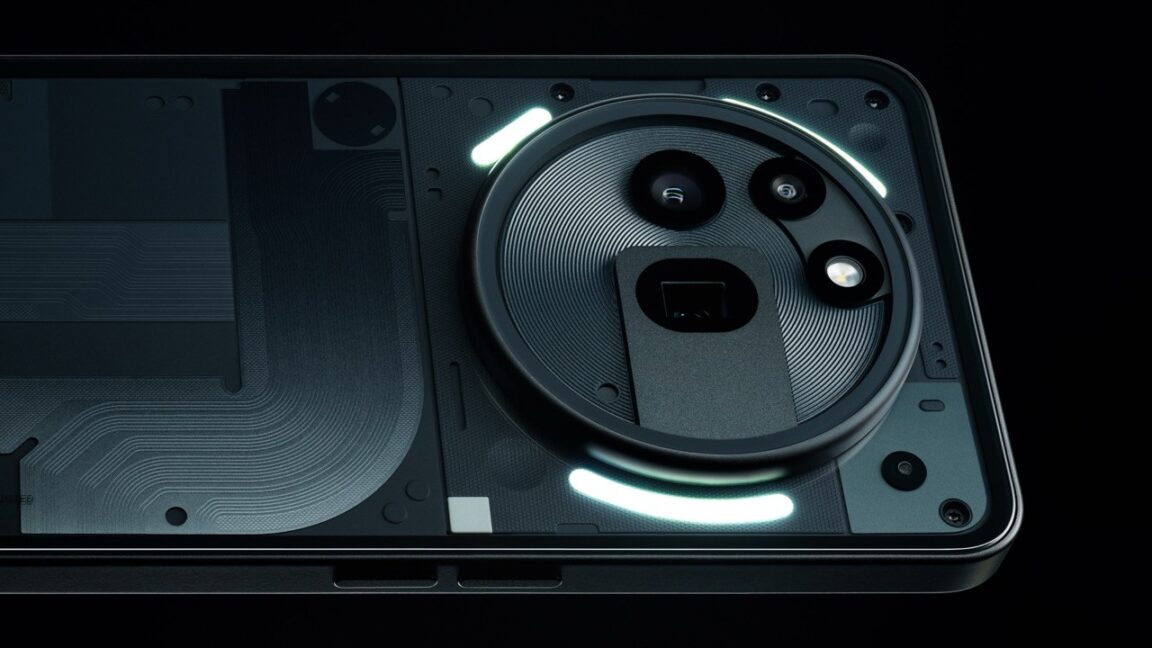
Nothing explains why the Phone 3a Pro ended up with a giant camera
arstechnica.com
Something from Nothing Nothing explains why the Phone 3a Pro ended up with a giant camera Nothing knows it's not for everyone. Ryan Whitwam Feb 24, 2025 3:34 pm | 1 Credit: Nothing Credit: Nothing Story textSizeSmallStandardLargeWidth *StandardWideLinksStandardOrange* Subscribers only Learn moreNothing, the smartphone venture from OnePlus co-founder Carl Pei, is on its third generation of Android smartphones. The Nothing Phone 3a and 3a Pro will be officially announced on March 4, but there won't be much left to reveal. Not only has Nothing teased the phones a few times, there's also a new video highlighting the Nothing Phone 3a Pro's design. In it, Nothing's design team speaks at length about how they tried to incorporate the chunky camera module, but what they came up with is going to be divisive.As we approach 20 years since the iPhone made touchscreen smartphones the default, the form factor is very fleshed out. Some of today's most popular smartphones have almost reached the point of anti-designflat, unremarkable bodies that are intended to be covered up with a case. There's something to be said for that when most people slap a sheet of plastic on their phone and only remove it once in a blue moon. Nothing, however, designs phones with transparent panels and glowing "Glyphs" that are intended to be seen. In the case of the 3a Pro, there's also a camera module so big it's sure to stand out.People generally want big screens and big batteries that don't make phones too thick or heavy. Some components have shrunk or been dropped entirely to free-up space (a moment of silence for the dearly departed headphone jack). Camera modules, however, can't shrink infinitely. Smaller lenses and sensors have an impact on image quality, so expensive phones often have gargantuan camera arrays that can make phones top-heavy. For example, look at the Google Pixel 9 series, which features a camera bump that towers above the rest of the back.The Nothing Phone 3a Pro isn't a flagship device, but it'll have more cameras than the Nothing Phone 3a that will release at the same time. The new design video shows off the phone's three rear-facing sensors: a 50MP primary, an 8MP ultrawide, and a 50MP periscope telephoto (focal length unknown). The Nothing Phone 3a Pro has three of those glowing Glyphs on the back, framing the enormous camera module. The phone's PCB also needed some tweaks to make room for the folded periscope assembly, which is much thicker than the other sensors. Nothing explains why the Phone 3a looks like that. In the video, the designers talk about the tight timeline for finalizing industrial design, which was only about three months in the case of the Nothing Phone 3a Pro. They went through numerous design iterations in that time, exploring ways to adorn the camera module with lenses and lights. Some of the prototypes they show actually do a better job of minimizing the camera, but the disk-shape won out because it looked more consistent with the phone's overall design languagethey want it to grab your attention.Even though Nothing has gone to great lengths to cultivate a distinctive brand identity, it's not the only company to use a big, round camera module. OnePlus, Xiaomi, and Huawei have all used similar designs. While the shape of the aluminum camera bump on the latest Nothing phone makes it stand out, it may not be in the right way.The designers note that Nothing's designs don't usually find universal approval. Some people won't like the brand's aesthetic, and others think the Glyphs and transparent panels are refreshing. "Some people will love it and some people will hate it," a designer says in the video.Nothing won't talk pricing until next month, but the company's A-series phones are priced below flagship level. The Nothing Phone 2a was priced at $350, and the Phone 2 was $600. The Phone 3a Pro, which runs a Snapdragon 7s Gen 3 processor with 12GB of RAM, will probably be someplace in the middle. That will put it up against phones like the Pixel 8a.Ryan WhitwamSenior Technology ReporterRyan WhitwamSenior Technology Reporter Ryan Whitwam is a senior technology reporter at Ars Technica, covering the ways Google, AI, and mobile technology continue to change the world. Over his 20-year career, he's written for Android Police, ExtremeTech, Wirecutter, NY Times, and more. He has reviewed more phones than most people will ever own. You can follow him on Bluesky, where you will see photos of his dozens of mechanical keyboards. 1 Comments
0 Kommentare
·0 Anteile
·70 Ansichten


